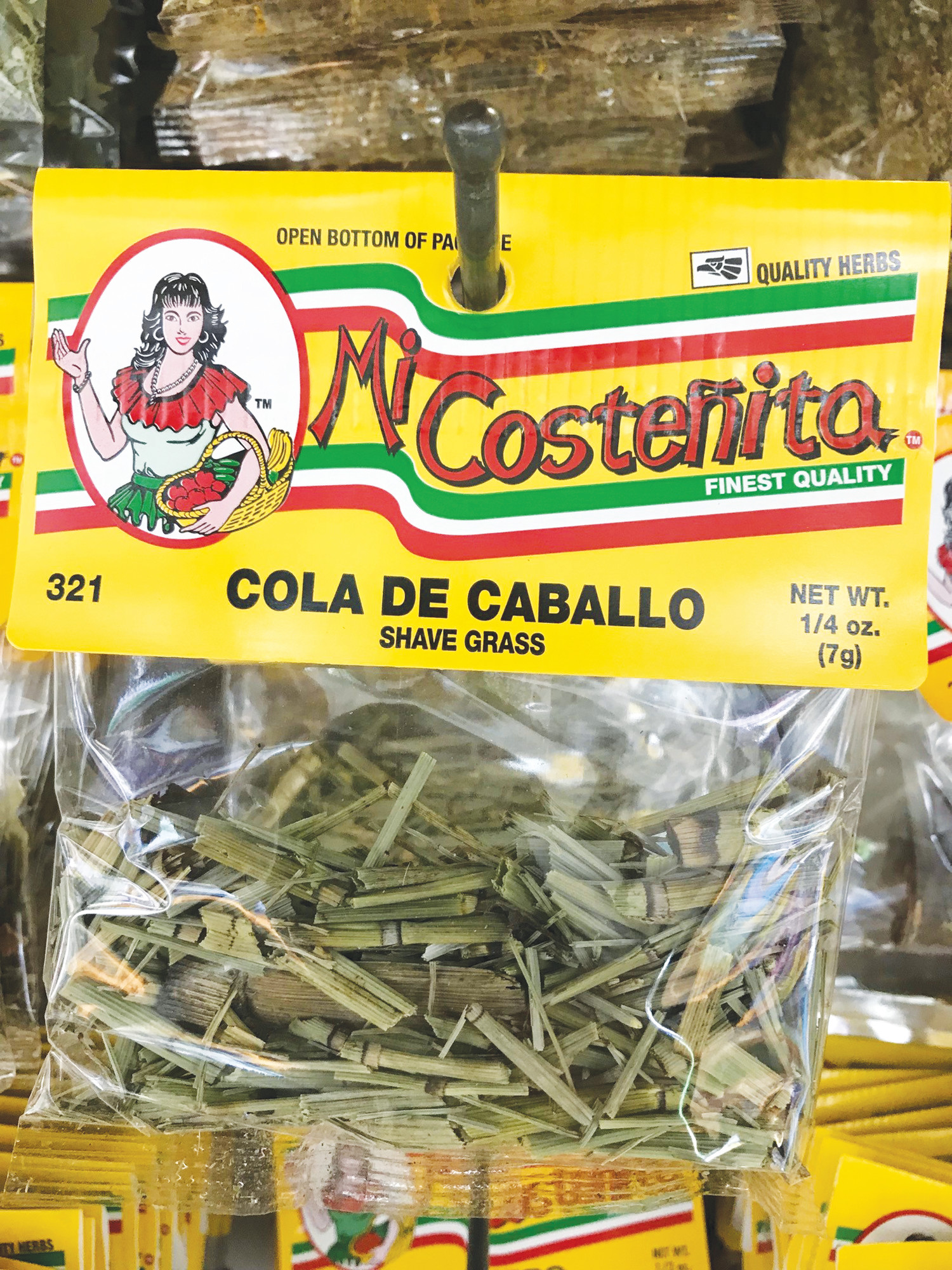Scrub pots or make tea from this scratchy plant
Special to The Sumter Item
I just finished a wonderful fish lunch at a local restaurant named "Mercado Acapulco," near our campus, a place that features a restaurant along with its well-stocked grocery store. Such a lunch it was! A crispy hot mojarra, which is the same as tilapia. There it was, lightly fried in a hot pan, deeply scored on both sides, with the head still on, served with piquant beans and cheese, and an avocado and tomato salad. The steaming fish: tender, white and easily flaking from the bones. (When you finish on one side, remember to turn it over to get to the other side.) Delicious! And then time for a little botany.
You know, you just can't go anywhere without seeing interesting plants. There we were, aisle after aisle of groceries around us, and then a rack of various kinds of dried herbs and spices, all bagged up and ready to go. Peppers, mint, mullein flowers, cilantro, star anise, peppercorns, papalo, oregano, romerito it was almost too much for a botanist: so much variety and interesting things! And then this stuff.
"Shave grass" is a really interesting name for a plant, and this name speaks to the very rough nature of the plant involved. It is not at all a grass, but one of about 15 different species, all of which are spore-producing, with no flowers or seeds entering the picture, and more closely related to ferns than flowering plants. The stems are typically ridged, and hollow. Some of the species lack apparent leaves, which are reduced to stubbly growths at the nodes of the stem. The cells of the stems contain considerable amounts of silica, which is very unusual for plants. The silica within the tissues results in a very rough, scratchy feel if you handle the fresh plants. They say that old-timers out west used these plants to scour their pots and pans after cooking.
This group of plants represents something of a living fossil, with its ancestors easily traced back nearly 400 million years ago. In fact, these ancestors formed vast forests of tree-sized plants the modern ones we have these days are at most maybe 3 to 4 feet tall. Those vast forests died and rotted, and of course form, in large part, the deposits of coal that we have now.
There is a considerable amount of usage of these plants by humans and for a variety of reasons. The boiled stems provide teas, said to be effective in treating a variety of health conditions. There are indeed quite a number of compounds, other than the silica, within the tissues, and many of these may have important physiological effects on humans. The use of any herbs should always proceed with great care, as overuse of various herbs can be dangerous. For instance, these plants are impugned in a number of livestock poisonings. Meanwhile, the various species in our mysterious genus are quite attractive, and often find themselves in cultivated settings such as water gardens and rock gardens.
Answer: "Calo de Caballo," "Horsetail," Equisetum (several species)
John Nelson is the curator of the A.C. Moore Herbarium at the University of South Carolina, in the Department of Biological Sciences, Columbia SC 29208. As a public service, the Herbarium offers free plant identifications. For more information, visit www.herbarium.org or call 803-777-8196, or email nelson@sc.edu.
More Articles to Read

